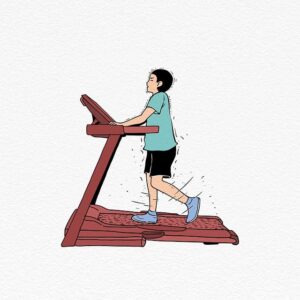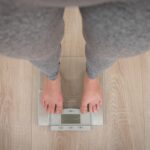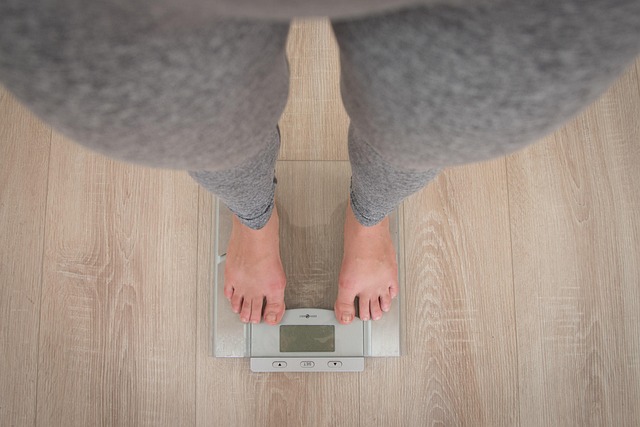How to loss weight in 30 days
How to reduce body weight in thirty days Are you prepared to lose a few additional pounds and feel fantastic in just thirty days? That’s amazing! Making wise, long-lasting adjustments that result in a healthier, happier you is what weight loss is all about, not starvation or bizarre diets. This 30-day routine plan is intended to serve as your helpful mentor, assisting you in creating enduring habits.

The Mentality Transition: Beyond Merely Scaling Values Let’s discuss mindset before getting into the specifics. Progress, not perfection, is what this trip is all about. Good days and bad days are inevitable, and that’s totally acceptable. Pay attention to how you feel: lighter, more confident, and more energized. Don’t let a mistake ruin your entire plan; instead, celebrate little triumphs. Just as vital as your physical health is your mental wellness! Fueling Your Body: The Informed Guide to Nutrition Put crash diets out of your mind. Our goal is to provide your body with healthy foods that will keep you feeling satisfied and invigorated.
Lean proteins include fish, eggs, tofu, lentils, beans, Greek yogurt, and chicken breast. They keep you feeling full and are your building blocks for muscle. And plenty of vegetables: At every meal, pile your plate high with vibrant vegetables. They are naturally low in calories and high in fiber, vitamins, and minerals. Consider bell peppers, cucumbers, carrots, broccoli, and leafy greens. Whole Grains: Choose whole-wheat bread, quinoa, brown rice, and oats. These offer long-lasting energy and fiber, both of which are essential for fullness and digestion. Good Fats: Don’t be afraid of fat! Nuts, seeds, avocado, and olive oil are vital for nutrient absorption and hormone balance. Don’t forget to enjoy them in moderation, though.

Fruits: The sweet treat of nature! Water, water, water! Savor a range of fruits for their inherent sweetness, vitamins, and antioxidants. This cannot be negotiated. Try to consume eight to ten cups each day. Water keeps you hydrated, speeds up your metabolism, and may even help you resist cravings. For a cool variation, try adding cucumber or lemon. Things to Restrict (or Steer Clear of) for 30 Days: Processed Foods: Consider highly refined foods, sugary cereals, packaged snacks, and fast meals. These frequently include bad fats, hidden sugars, and empty calories. Added Sugars: One of the main causes of weight gain is sugary beverages (soda, sweetened juices), candy, pastries, and desserts. Look for hidden sugars in labels! Too Much Salt: Bloating and water retention can result from too much salt.
*Deep-fried foods
These are high in calories and bad fats. Alcohol: Alcohol can disrupt your body’s ability to burn fat and adds empty calories. Portion Control Made Simple: Not every meal requires a food scale. Here are a few basic visual indicators: Protein: A portion the size of your palm. Whole grain carbohydrates: A portion cupped in the hand. Healthy Fats: A piece the size of your thumb. Vegetables: Any quantity you choose! Half of your plate should be filled. Moving Your Body: Exercise to Burn Fat and Gain Energy Working out doesn’t have to include spending hours at the gym. Find things you enjoy doing, and be consistent. Your weekly schedule for movement: Cardio: Raise your heart rate for at least 30 to 45 minutes three to four times a week. This can include swimming, cycling, dancing, jogging, brisk walking, or even jumping rope.

* Strength training (two to three times a week): Gaining muscle increases your metabolism even when you’re not moving. Squats, lunges, push-ups, and planks may all be performed with your own body weight. If you have light dumbbells, you can also use them. For every exercise, aim for three sets of ten to twelve repetitions. Flexibility & Mobility (Daily): To increase flexibility, lessen soreness, and encourage relaxation, incorporate yoga or stretching for ten to fifteen minutes. Move More, Sit Less: Use the stairs, go for a lunchtime stroll, park farther away, or engage in some strenuous activities. Every little bit of movement matters! The 30-Day Schedule: A Week of Examples (Adapt to Your Lifestyle!) This is only a template, so feel free to change the meals and workouts to suit your tastes and the resources at your disposal.
*Habits of the Day
Drink a big glass of water first thing in the morning and stay hydrated all day. Try to get between seven and nine hours of good sleep every night. Eat mindfully by taking your time, enjoying your food, and paying attention to your body’s signals of hunger and fullness.

Week 1: The Basis Focus: Adapting to more healthful eating habits and mild exercise. Ideas for Meals: Breakfast: scrambled eggs with spinach or oatmeal with berries and a dash of almonds. Lunch: A big salad with loads of vegetables, lean protein (chicken or chickpeas), and a mild vinaigrette. Supper could be lentil soup with whole-wheat bread or baked salmon with brown rice and steamed vegetables. Snacks: a handful of berries, carrot sticks with hummus, and an apple with a few almonds.* Exercise: Cardio: 3–4 light jogs or a 30-minute brisk stroll. Strength: Planks (two to three times), bodyweight squats, lunges, and push-ups (on knees if necessary). Flexibility: Stretch every day.
Week 2: Getting Up to Speed Focus: Trying out new, healthful meals and stepping up the ante a little. Meal Ideas: Keep eating meals that are high in nutrients. Try a variety of veggie and lean protein combos. Exercise: Cardio: Up the ante on duration or intensity to 35–45 minutes. Try interval training (jog for one minute, walk quickly for two minutes, etc.). Strength: Increase the number of repetitions or sets, or experiment with different exercise variations (e.g., decline push-ups, jump squats). Flexibility: Try a beginning yoga video or keep stretching every day.
Week 3: It’s All About Consistency Focus: Keeping up the momentum and noticing the improvements. Meal Ideas: You ought to feel more invigorated and less dependent on desires for sweets. Keep giving whole, unprocessed foods priority. Workout: Continue your regimen, pushing yourself a little harder each time. Try a new aerobic exercise if you feel comfortable doing it.
Week 4: Concluding with a bang and more Emphasis: Planning for long-term success and forming ingrained behaviors. Meal Ideas: Eating healthily ought to feel more instinctive by this point. Try meal planning to make healthy choices even more convenient. Exercise: Keep up the activities you have selected. Think about establishing new fitness objectives for the upcoming month.

Important Things to Remember: Pay Attention to Your Body: Stop if you experience pain. Days of rest are essential for muscle repair. Drink plenty of water: This cannot be emphasized enough! Track Your Progress (Optional): You can record your food intake, activity, and emotional state using a journal or an app. This may inspire you! * Speak with a Professional: Before beginning any new weight loss program, it is always advisable to speak with a physician or qualified dietitian if you have any underlying health issues or concerns.










